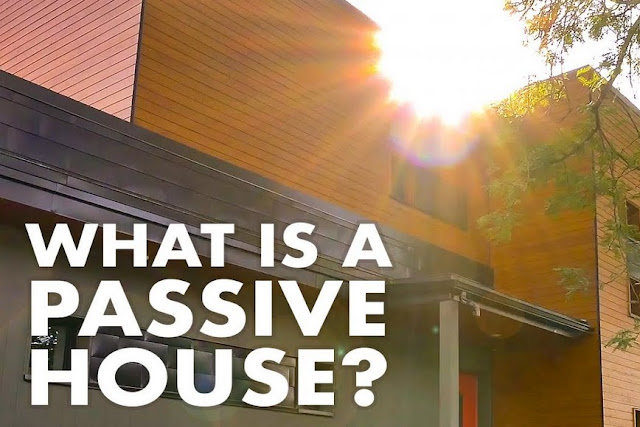What is Passive House? This was needed hopefully it becomes a world standard!
The Passive house design can be used to reduce the cost of abandoning traditional heating systems and to provide heating with renewable energy as a compensation for the modernization of the outside of the building. If you are planning to build your own passive house, it is important to know as much as possible about passive house design. The passive house is a very well insulated, almost airtight building that minimizes energy loss and enhances the comfort of the inhabitants.
The Passive House project uses a variety of "passive" building solutions to take into account the entire building lifecycle and eliminates the traditional "active" technology that consumes wasted fossil fuels.
Passive solar Design The passive solar design is especially used for using free sun energy to supply heat. The passive house is arranged so that the large windows on the south side absorb the energy of the Sun. The rooms are arranged so that the solar heat is distributed through the interior of the house through these windows. The process of capturing solar energy is considered "passive" because the building itself does not generate energy.
Thermal energy comes from natural sources and is not produced exclusively by artificial means.
Provide heat mass Passive houses can be made with high density or lightweight materials. In the case of a light structure such as a crate, some internal heat mass is included. The thermal mass usually allows dense building materials such as concrete, stone, brick and tile to keep the heat free. During the day when the outside temperature is highest, the large thermal mass inside the insulated shell absorbs the solar heat.
When the outside temperature drops in the evening, thermal mass radiates the heat absorbed naturally in every room.
Install Super Insulation The insulation of the outside of the building is one of the most important measures of passive house because it has the greatest impact on energy consumption. In general households, well-designed and cleverly installed insulation can reduce the amount of heat lost through the outside of the building at least twice.
In addition, high-level insulation will significantly improve thermal comfort for residents of the building.
Make the building airtight Effective airtightness is another important factor in creating a passive house. The leakage of warm air from the building is a major cause of heat loss and it leads to loss of energy.
Improving the airtightness of the building reduces uncontrolled airflow through cracks and cracks in the fabric of the building, and must be determined by the designer at the beginning of the planning process.
Proper triple window High-performance windows are an important factor in the overall effectiveness of building envelopes because they are designed to provide high thermal performance. In the building of the passive house, glazing with triple glazing is usually combined with low-radiant glass (low-E) and air gaps by argon or krypton.
The expertly designed and installed triple glass window greatly reduces energy consumption and improves passenger comfort.
Use unnecessary heat
In addition to passive solar heating, passive houses utilize heat from appliances such as lighting, refrigerators and washing machines, and residents of the building.
Installing a heat recovery system Ventilation by heat recovery is the process of exchanging the heat energy contained in the air taken out of the house and transmitting it to the incoming alternative air. This system can include a centralized exhaust system or individual room fans. This ventilation method is "active" technology that uses a small amount of electricity, but it is thought to be useful for energy saving.
It provides the necessary fresh air for the building and increases the comfort of the passenger and keeps the building warm.
Compatible with renewable energy heating The main purpose of solar passive design is to completely abandon the traditional heating system. In order to maintain a comfortable condition especially on cold winter days, it is usually necessary to provide additional heating. It is often achieved with a small capacity heat recovery ventilation system that is designed to maintain atmospheric quality. Alternatively, a wood stove, solar heating, an air heat pump, or a renewable energy technology such as a ground heat pump may be preferred.

0 Response to "What is Passive House? This was needed hopefully it becomes a world standard!"
Post a Comment